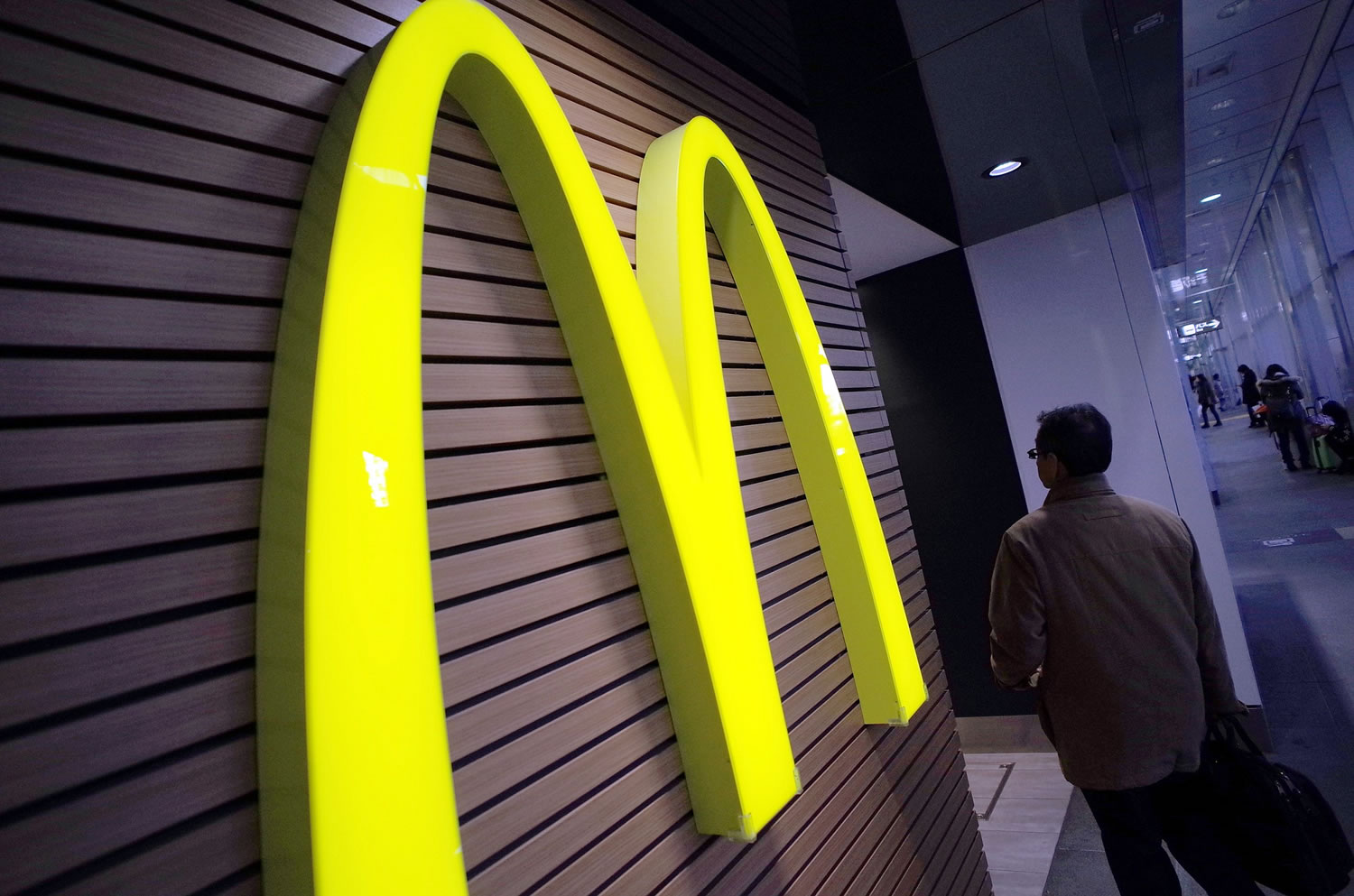CHICAGO — McDonald’s is reorganizing its business into four segments and selling more restaurants to franchisees as newly installed CEO Steve Easterbrook aims to show that the company can rebound from a prolonged slump.
But some company observers said they were hoping to see more risk-taking from the struggling burger giant.
“Everything that he talked about seemed sensible, but it seems to lack that calculated risk that they talked about on the last earnings call,” said R. J. Hottovy, who follows restaurant companies at Morningstar.
“I don’t look at anything they’ve discussed today as truly groundbreaking, and more of just catching up with a lot of things their peers have done.”
McDonald’s, based in suburban Chicago, kicked off a day of turnaround announcements with a Monday morning video from Easterbrook, who was installed March 1. It followed with a statement outlining some of the goals, such as efforts to have more franchised locations, in greater detail.
“No business or brand has a divine right to succeed,” Easterbrook said in the opening minutes of the video, which runs about 23 minutes. “The reality is our recent performance has been poor. The numbers don’t lie.”
Easterbrook, who aims to turn McDonald’s into “a modern, progressive burger company,” said it has “scale and reach like no other company,” yet has become cumbersome and slow.
“We’re not on our game,” Easterbrook said.
McDonald’s faces issues including a long string of sales declines amid fresh competition from fast-casual chains. It faces economic pressure in major markets such as Europe as well as union-backed protests as some workers seek higher wages and improved working conditions.
The company’s plans range from creating a structure with fewer layers and less bureaucracy to working on improving the experience for customers.
Easterbrook, in a statement, said the changes are “exciting and liberating moves for our system” and that “meaningful, positive measures of improvement will take time.”
Last month, McDonald’s posted ugly quarterly results, including a 33 percent decline in profit. Investors overlooked the disappointing first quarter as they were optimistic about the company’s other announcement that day: the plan to announce the initial details of its turnaround plan Monday.
Analysts said Monday’s news was not enough to please some investors who were hoping for bigger changes such as a real estate overhaul and more details on menu changes.
Specifics, such as the number of corporate jobs to be eliminated, were not disclosed. Easterbrook said McDonald’s is starting delivery in New York City through Postmates, a service that already delivers for chains such as Chipotle and Starbucks.
McDonald’s new structure will include four segments: The U.S., international, high-growth and foundational markets.
Starting July 1, the new segments will be run by existing McDonald’s executives, some in expanded roles. Mike Andres will continue to serve as president of the U.S. business, a role he took on last fall. Doug Goare, who is currently president of McDonald’s Europe, will become president of International Lead Markets, a group of markets including Australia, Canada, France, Germany and the U.K.
The U.S. market accounts for more than 40 percent of McDonald’s operating income, followed by International Lead Markets, which accounts for about 40 percent of operating income.
McDonald’s now plans to refranchise 3,500 restaurants by the end of 2018, which would bring it from the current 81 percent of restaurants being franchised to about 90 percent. It had already planned to refranchise at least 1,500 restaurants by 2016.
Having fewer company-run restaurants frees the corporation to spend more time on branding and other overall efforts rather than being as concerned with day-to-day operations at individual stores. It shifts some risk to franchisees, who pay set percentages of their sales back to McDonald’s.
The company said that all together, its moves should reduce general and administrative costs by about $300 million a year. Much of the savings should be realized by the end of 2017.
McDonald’s also plans to return $8 billion to $9 billion to shareholders this year. It aims to reach the top end of its goal to return $18 billion to $20 billion to shareholders by the end of 2016.
So far this year, McDonald’s has overhauled everything from its ingredients to its employee compensation to its advertising as it tries to boost sales around the world. It continues to face criticism over issues including the nutrition of its food and its plan to raise wages, which only affects company-owned locations, not the vast majority of U.S. restaurants run by franchisees.
Also Monday, the union-backed Fight for $15 group said thousands of cooks and cashiers would participate in what it said would be the biggest protest ever to hit McDonald’s annual shareholder meeting, set for May 21.
In his video, Easterbrook said he expects ongoing pressures to persist through at least the first half of 2015. McDonald’s has said it expects its sales weakness to continue in the near term. It already forecast a decline in global comparable sales for April. The April sales results are due Friday.
First-quarter sales at restaurants open at least 13 months, or comparable sales, fell 2.3 percent as fewer customers visited McDonald’s. In the United States, comparable sales dropped 2.6 percent. McDonald’s global comparable sales have fallen in four consecutive quarters, something that had not happened in a dozen years.
In April, Easterbrook quoted the corporation’s founder, Ray Kroc, in his assessment of what the company must now do in its turnaround effort.
“McDonald’s founder, Ray Kroc, made a statement about our business that is as relevant today as it was 60 years ago: ‘Take calculated risks. Act boldly and thoughtfully. Be an agile company,’ ” Easterbrook said in a statement. “McDonald’s is employing these timeless business philosophies as we embark on a turnaround to drive momentum in our business.”



